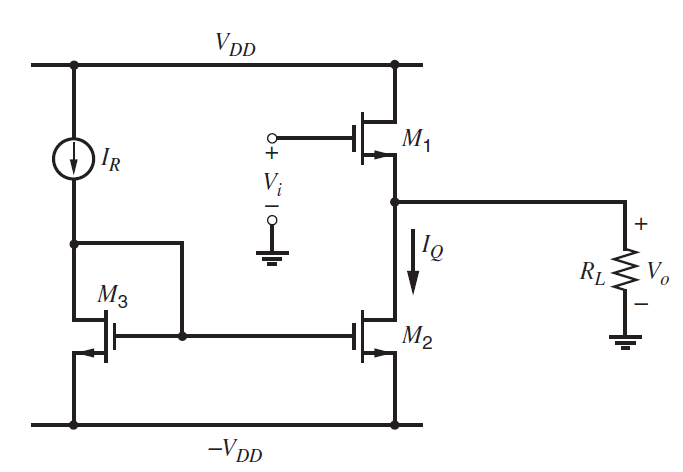Question: When the distortion is small, the second and third harmonic-distortion terms of an amplifier can be calculated from the small-signal gains at the quiescent and
(a) Calculate an expression for the small-signal gain Av = dvo/dvi.
(b) Let vi =vÌ‚i sin ωt as in (5.52), and derive expressions forA+v ,AvQ, and Aˆ’v as defined in Problem 5.7.
(c) Define two normalized differential gain error terms as
(i) E+ = (A+v ˆ’ AvQ)/AvQ
(ii) Eˆ’ = (Aˆ’v ˆ’ AvQ)/AvQ
and calculate expressions for (E+ + Eˆ’) and(E+ ˆ’ Eˆ’).
(d) Compare the results of part (c) with (5.54) and (5.57) to calculate HD2 and HD3 in terms of E+ and Eˆ’.
(e) Use the results of part (d) and Problem 5.7 to calculate HD2 and HD3 for the circuit of Fig. 5.8 under the conditions given in Problem 5.7. Compare the results to the results of the Example in Section 5.3.2.
Figure 5.8

VDD M1 IR RL M2 -V DD
Step by Step Solution
3.54 Rating (158 Votes )
There are 3 Steps involved in it
a V o a 1 v i a 2 v 2 i a 3 v 3 i A V dv o dv i a 1 2a 2 v i 3a 3 v 2 i b ... View full answer

Get step-by-step solutions from verified subject matter experts
Document Format (2 attachments)
1528_605d88e1b16b3_686860.pdf
180 KBs PDF File
1528_605d88e1b16b3_686860.docx
120 KBs Word File


